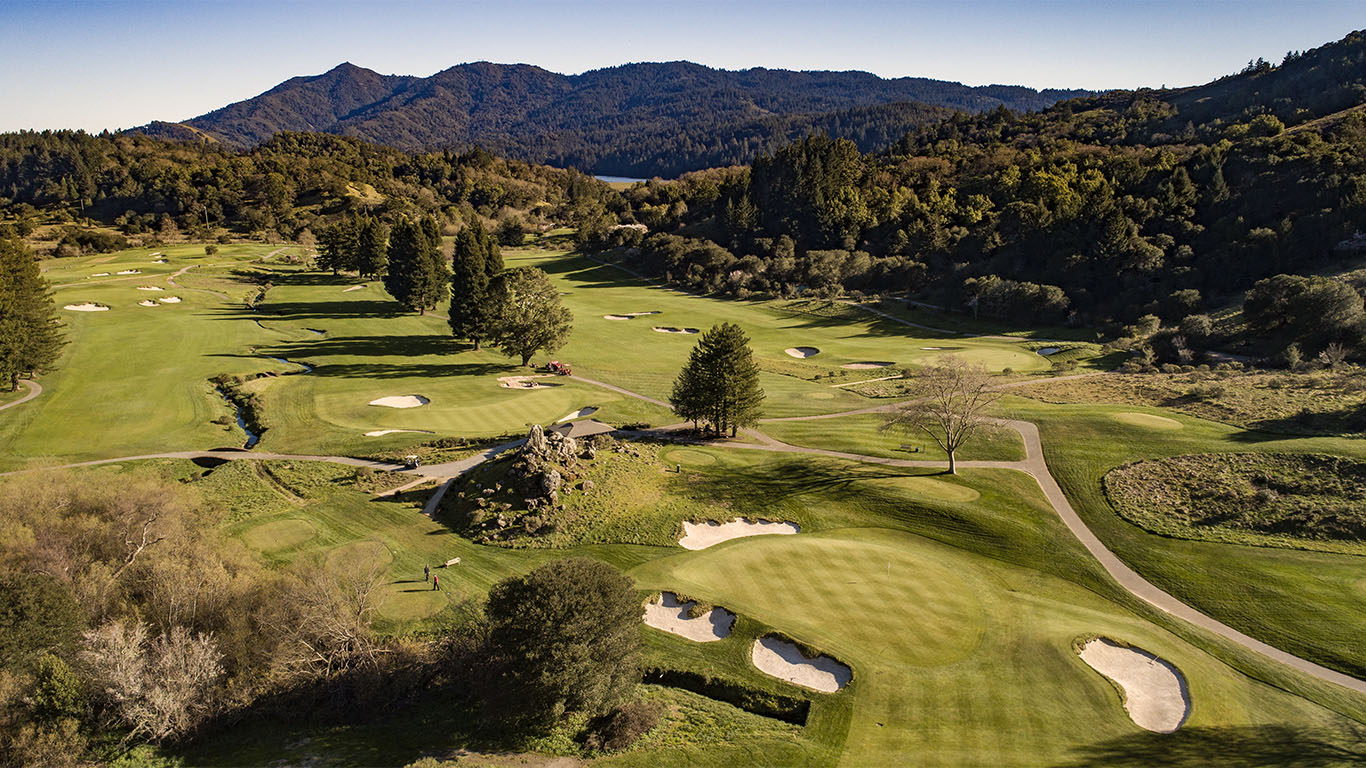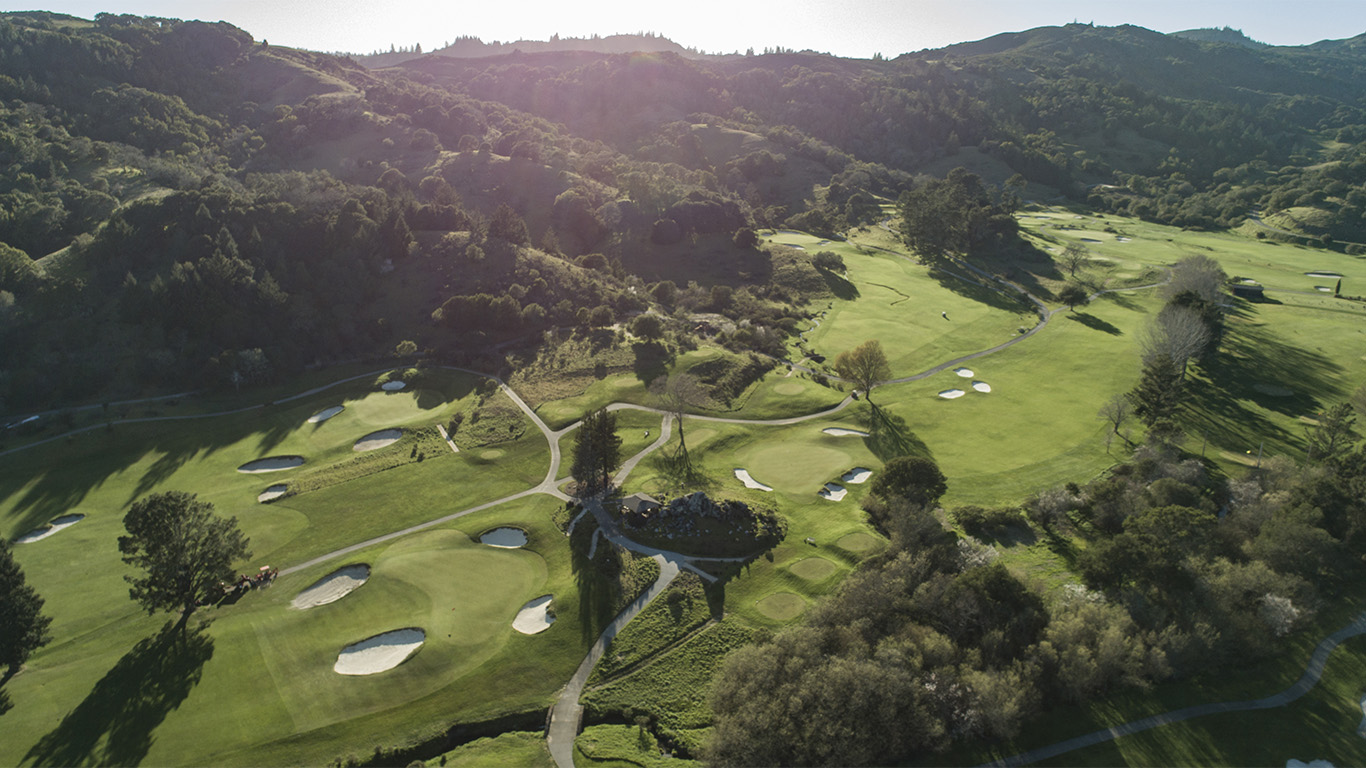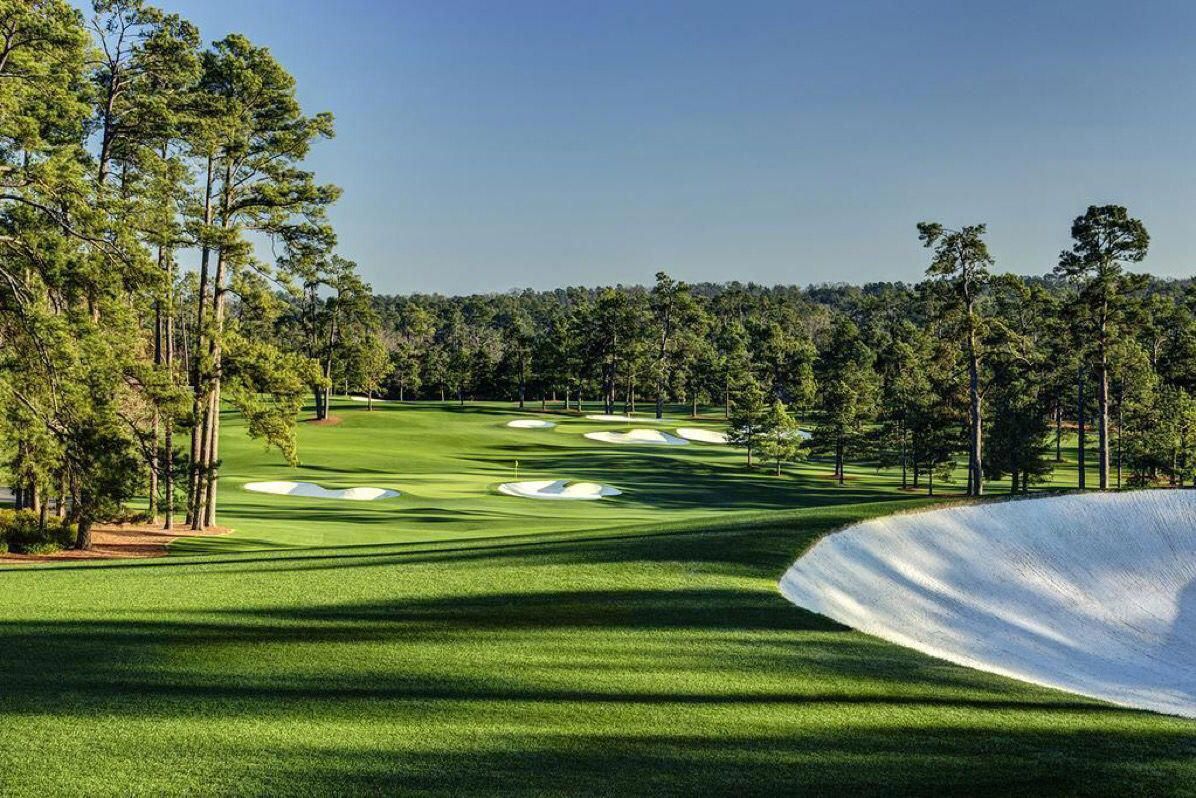Alister MacKenzie, co-architect of Augusta National, had a genius for routing. His designs use the landscape with supreme variety and strategic sophistication. They also make walking a pleasure, even when the site is hilly. But perhaps the most significant tendency in Dr. MacKenzie’s routings is his penchant for focal points—that is, places where multiple holes converge on a prominent landform.
The good doctor is not the only architect to use this tactic, but he applied it so frequently and memorably that it became a kind of trademark. Indeed, his and Bobby Jones’s routing of Augusta National has one of the finest focal points in tournament golf. First, though, let’s look at an example from earlier in MacKenzie’s career.
A Knoll in a Meadow
At MacKenzie’s first U.S. course, Meadow Club in Fairfax, California, he centers his routing on a striking feature. Near the center of the property, there is a knoll topped by a natural rock outcropping.

The central rock outcropping at MacKenzie's Meadow Club. The 12th green is in the foreground, and the 6th green is on the other side of the knoll. On the left is the 16th hole, and to the right are the 13th and 15th fairways.
The 6th and 12th greens are benched into opposite slopes, and the 7th and 16th tees sit near the peak. As you walk from the 15th green toward No. 16, you discover a rest area amid the rocks. From there, you can sip ice water and contemplate the southern half of the property before tackling the final three holes.

The hub of the Meadow Club's routing from the opposite angle. The 7th hole doglegs left into the hills.
Focal points like this have a number of benefits. For one, putting several greens close together makes maintenance more efficient. Of more interest to the golfer, though, is that focal points engender a sense of familiarity and coherence. You get to visit certain landforms not just once but at several different points in the round and from several different angles. When you walk off the last green, you feel as though you’ve come to know the property well, even though the architect has directed your attention at a select few features.
In addition, focal points enhance what architecture geeks refer to as the “layering” of holes across an open vista. Layering can create visual deception and intimidation. Hazards on other holes may look like they’re in play, and bunkers may appear to be closer together than they are. Furthermore, layering allows players to preview future holes and recall past ones, giving space for the kind of anticipation and reflection that fixes a course in a golfer’s memory.
The “Sweet Spot” of Augusta National
If asked to identify the hub of Augusta National’s routing, most fans would think immediately of Amen Corner. But as Geoff Ogilvy pointed out during his brilliant exegesis of the front nine on The Fried Egg podcast, the course’s “sweet spot” is in fact a hill where the 2nd, 7th, and 17th greens—as well as the 3rd, 8th, and 18th tees—converge.
“From that point,” Ogilvy said, “you can pretty much get to every hole with a five-minute walk. You’re really central. You watch [players] come through 2, then you see that same group come through 7, and later on they come back through 17. It’s brilliant.”

Looking down the 2nd fairway toward Augusta National's "sweet spot." Tip: when a Masters competitor hits his second shot into No. 2, the telecast usually shows something close to this angle. You will see the 7th green top right and occasionally the 8th tee to the left.
This focal point helps create a feeling of intimacy on a property of immense proportions. “[Augusta] seems massive, big-scale,” Ogilvy explained. “Big wide fairways, big bunkers. But it’s intimate because everything comes back. You realize that everything is kind of close.” This closeness, according to Ogilvy, produces the renowned intensity of the Masters: “You always feel like part of the whole show; you’re never separated out to one spot way away from everything else.”
Perhaps this is why players say the roars on Masters Sunday are different. It’s not simply that the crowd is excited; it’s that everyone is, so to speak, within shouting distance of one another.
Many aspects of Augusta National’s design have evolved since 1933. The strategies of the holes, the aesthetics of the bunkers, the shapes of the greens—a lot has changed. Informed observers tend to agree with the blunt assessment of Golf Club Atlas: “To call it a MacKenzie course is false advertising.” Yet with just a few exceptions, MacKenzie and Jones’s 1933 routing remains. So today, whenever a player backs off a shot as a roar reverberates through the Georgia pines, take a moment to thank the good doctor and his mastery of routing.
More Masters coverage from The Fried Egg team:
Is Augusta National Turning Over a New Leaf?
Geoff Ogilvy’s notes on all 18 at Augusta National
Stories worth your time and tracking at the 2022 Masters
The Art Behind Augusta’s Roars: Focal points in Alister MacKenzie’s routings
Tiger’s Masters flirtation is something more than ceremonial


 by
by 
